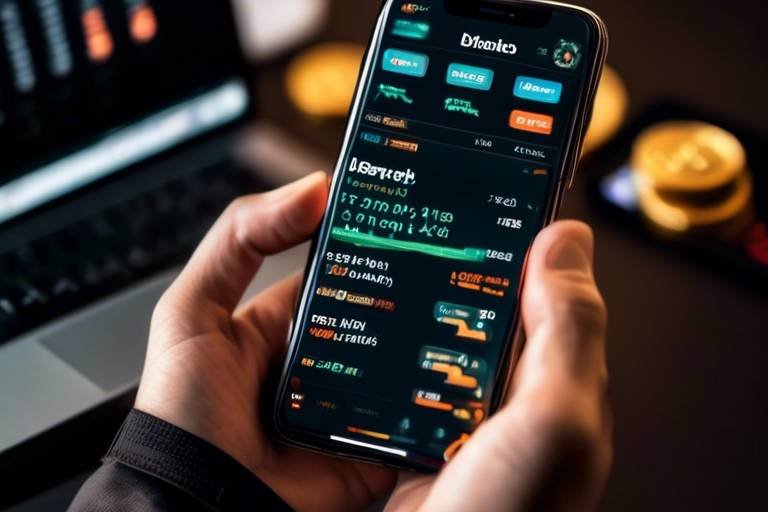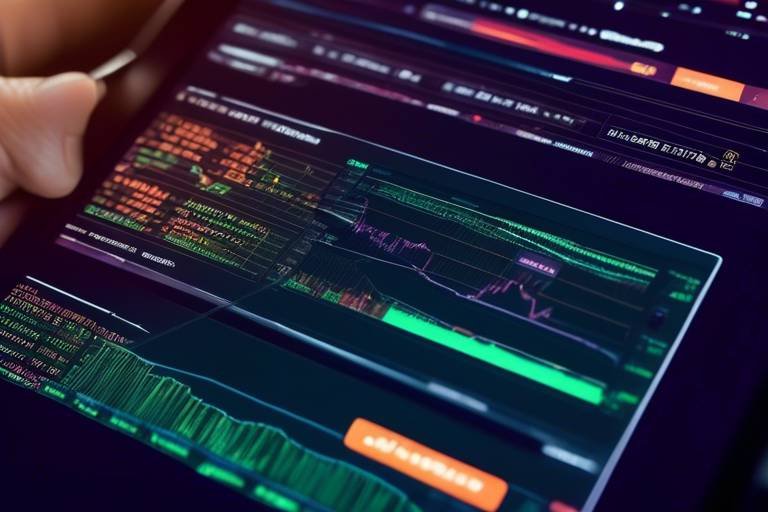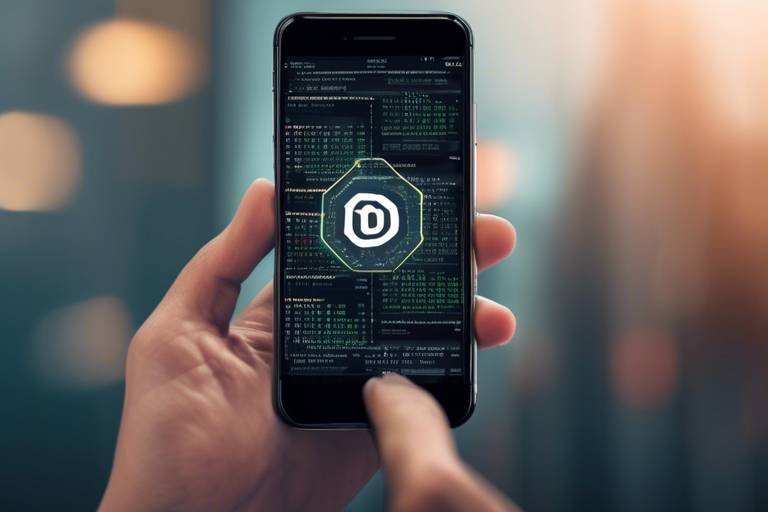How to Trade on Centralized vs. Decentralized Exchanges
In the ever-evolving world of cryptocurrency, traders are often faced with the decision of choosing between centralized and decentralized exchanges. Each platform has its unique characteristics and caters to different trading preferences. Understanding these differences is crucial for anyone looking to navigate the crypto market effectively. So, how do you decide which exchange to use? Let's dive into the nitty-gritty of both types of exchanges, their benefits, challenges, and how to make the most out of your trading experience.
Centralized exchanges (CEX) act as intermediaries between buyers and sellers, providing a streamlined platform for trading various cryptocurrencies. Think of them as the bustling marketplaces of the crypto world, where everything is organized and managed by a central authority. This structure makes it easier for traders, especially beginners, to jump in and start trading. However, while these exchanges offer user-friendly interfaces and high liquidity, they also come with their own set of risks. The most significant concerns include security vulnerabilities and the potential loss of control over your funds. When you deposit your assets into a centralized exchange, you are essentially trusting the platform to safeguard your investments.
On the flip side, decentralized exchanges (DEX) operate without a central authority, allowing users to trade directly with one another. This peer-to-peer model enhances security and privacy, as traders maintain control over their assets throughout the trading process. Imagine a marketplace where you can trade directly with your neighbor without anyone overseeing the transaction – that’s the essence of decentralized exchanges. However, while DEXs provide greater autonomy, they can also present challenges, such as lower liquidity and often more complex user interfaces, which may be daunting for newcomers.
Centralized exchanges come with several advantages that make them appealing for traders. Here are some key benefits:
- Higher Liquidity: CEXs typically have a larger user base, resulting in higher trading volumes and better liquidity.
- Faster Transaction Speeds: Transactions on centralized platforms are generally processed quicker due to their centralized nature.
- Diverse Trading Pairs: Most centralized exchanges offer a wide range of trading pairs, catering to various trading strategies.
These features make centralized exchanges particularly attractive for both novice and experienced traders, as they provide an easier entry point into the world of cryptocurrency trading.
To mitigate the risks associated with centralized trading, these platforms implement various security protocols. Common measures include:
- Two-Factor Authentication (2FA): This adds an extra layer of security by requiring a second form of verification when logging in.
- Cold Storage: Many exchanges keep the majority of their funds in offline storage to protect them from hacks.
- Regular Audits: Some exchanges undergo regular security audits to identify and fix vulnerabilities.
While these measures enhance security, it's crucial for traders to remain vigilant and practice good security hygiene.
The user experience on centralized exchanges is typically more streamlined. With intuitive interfaces, customer support options, and educational resources, these platforms are designed to cater to users of all skill levels. A well-designed interface can significantly reduce the learning curve for new traders, allowing them to focus on making informed trading decisions rather than navigating a complicated system.
Despite their many benefits, centralized exchanges also face several challenges:
- Regulatory Scrutiny: As governments worldwide begin to regulate cryptocurrencies, centralized exchanges must navigate complex legal landscapes.
- Risk of Hacking: High-profile hacks have raised concerns about the security of centralized platforms.
- Withdrawal Limits: Some exchanges impose withdrawal limits, which can frustrate traders looking to access their funds quickly.
These challenges highlight the importance of conducting thorough research before choosing a trading platform.
Decentralized exchanges offer several advantages that appeal to users prioritizing security and autonomy. Here are some of the key benefits:
- Greater Control: DEXs allow users to maintain control over their private keys and funds, reducing the risk of loss.
- Enhanced Privacy: Many decentralized platforms do not require personal information, providing a higher level of privacy.
- Resistance to Censorship: DEXs operate on a peer-to-peer basis, making it difficult for any entity to censor transactions.
For many traders, these features make decentralized exchanges an attractive alternative to their centralized counterparts.
However, one significant challenge for decentralized exchanges is liquidity. Lower trading volumes can lead to higher slippage during transactions, especially for less popular tokens. This can make trading less efficient and potentially more expensive. Traders looking to capitalize on price movements may find it challenging to execute large trades without affecting the market price.
As the cryptocurrency landscape continues to evolve, the future of trading may see a blend of centralized and decentralized features. This hybrid approach could cater to diverse trader preferences, enhancing overall market efficiency. Imagine a world where you can enjoy the benefits of both centralized and decentralized trading, allowing for a more flexible and user-friendly experience. The key takeaway here is that both types of exchanges have their place in the market, and understanding their strengths and weaknesses will empower traders to make informed decisions.
1. What is the main difference between centralized and decentralized exchanges?
Centralized exchanges act as intermediaries and manage user funds, while decentralized exchanges allow peer-to-peer trading without a central authority.
2. Are decentralized exchanges safer than centralized exchanges?
Decentralized exchanges offer enhanced security and privacy, as users maintain control over their assets. However, they may face liquidity issues.
3. Can I trade on both types of exchanges?
Absolutely! Many traders use both centralized and decentralized exchanges to take advantage of their unique features and benefits.
4. What should I consider when choosing an exchange?
Consider factors such as security, user experience, liquidity, and the range of trading pairs offered when selecting an exchange.

Understanding Centralized Exchanges
Centralized exchanges (CEXs) are platforms that act as intermediaries between buyers and sellers in the cryptocurrency market. Think of them as the bustling marketplaces where traders gather, much like a crowded bazaar filled with vendors and customers. These exchanges provide a user-friendly interface that simplifies the trading process, making it accessible even for those who are just dipping their toes into the crypto waters. However, while they offer convenience and liquidity, they also come with their own set of risks and challenges.
One of the primary functions of centralized exchanges is to facilitate liquidity—the ease with which assets can be bought or sold without causing significant price changes. This is crucial because, in the fast-paced world of trading, time is often of the essence. Imagine trying to sell a hot commodity at a flea market; the more buyers you have, the quicker you can make a sale. Centralized exchanges typically have a large user base, which translates into higher trading volumes and better liquidity compared to their decentralized counterparts.
However, this convenience comes at a cost. When you trade on a centralized exchange, you are essentially trusting a third party with your funds. This means you have to consider the security measures they have in place. Most reputable exchanges implement various security protocols, such as two-factor authentication and cold storage for funds. Cold storage refers to keeping the majority of assets offline, away from potential hackers. Despite these measures, centralized exchanges are still prime targets for cyber-attacks, and there have been numerous incidents where traders lost their assets due to hacks.
Moreover, centralized exchanges can impose restrictions that might frustrate users. For example, they may have withdrawal limits or require extensive identity verification processes. This can feel like a double-edged sword: while these measures are designed to enhance security and comply with regulations, they can also hinder a trader's ability to access their funds quickly.
In terms of user experience, centralized exchanges usually provide a more streamlined process. They feature intuitive interfaces that cater to both novice and experienced traders. Many of them also offer customer support and educational resources to help users navigate the complexities of trading. This can be particularly beneficial for newcomers who may feel overwhelmed by the intricacies of cryptocurrency trading.
In summary, centralized exchanges play a pivotal role in the cryptocurrency ecosystem by providing liquidity and a simplified trading experience. However, traders must weigh these benefits against the risks of security vulnerabilities and regulatory challenges. As you consider diving into the world of crypto trading, understanding these nuances will help you make informed decisions about where and how to trade.

Understanding Decentralized Exchanges
Decentralized exchanges (DEXs) represent a revolutionary shift in the way we think about trading cryptocurrencies. Unlike their centralized counterparts, which rely on intermediaries to facilitate transactions, DEXs operate on a peer-to-peer basis, allowing users to trade directly with one another. This model not only enhances user privacy but also reduces the risk of hacks and fraud, as traders retain control over their funds at all times. Imagine a marketplace where you can buy and sell goods without a middleman taking a cut or controlling your assets—that's the essence of decentralized exchanges.
One of the standout features of DEXs is their ability to provide enhanced security. Since users hold their private keys, they are less vulnerable to the type of cyberattacks that have plagued centralized exchanges. However, this increased security comes with its own set of challenges. For instance, the user interfaces of many DEXs can be quite complex, often requiring a deeper understanding of blockchain technology and smart contracts. This complexity may deter novice traders who are accustomed to the straightforward interfaces of centralized platforms.
Furthermore, DEXs typically operate with lower liquidity compared to centralized exchanges. This can lead to slippage, where the price of an asset changes between the time an order is placed and when it is executed. For traders dealing in less popular tokens, this can be particularly problematic, as they may struggle to find buyers or sellers willing to transact at their desired price. To illustrate, consider the following table that compares liquidity levels between centralized and decentralized exchanges:
| Exchange Type | Liquidity | Transaction Speed |
|---|---|---|
| Centralized Exchange | High | Fast |
| Decentralized Exchange | Variable | Slower |
Despite these challenges, the benefits of decentralized exchanges are hard to ignore. They provide users with a sense of autonomy and control that is often missing in centralized platforms. With DEXs, traders can engage in transactions without fear of censorship or interference from regulatory authorities. This is particularly appealing to those who prioritize privacy and wish to maintain their financial independence. In a world where data privacy is becoming increasingly scarce, DEXs offer a breath of fresh air.
In summary, while decentralized exchanges present some unique challenges, they also offer a range of benefits that can be incredibly appealing to certain traders. As the cryptocurrency landscape continues to evolve, it will be fascinating to see how these platforms adapt and improve, potentially bridging the gap between the user-friendly nature of centralized exchanges and the autonomy of decentralized trading.
- What is a decentralized exchange? A decentralized exchange is a trading platform that allows users to trade cryptocurrencies directly with one another without the need for an intermediary.
- Are decentralized exchanges safe? Generally, DEXs are considered safer than centralized exchanges because users retain control over their funds. However, they can still be vulnerable to smart contract bugs.
- How do I trade on a decentralized exchange? To trade on a DEX, you typically need a cryptocurrency wallet that supports the exchange's token standards and some basic knowledge of how to use the platform.

Benefits of Centralized Exchanges
Centralized exchanges (CEXs) have carved out a significant niche in the cryptocurrency trading landscape, and for good reason. They offer a plethora of advantages that can cater to traders of all experience levels. One of the most enticing benefits of using a centralized exchange is the higher liquidity they provide. With a larger pool of buyers and sellers, traders can execute their orders quickly and at favorable prices. Imagine trying to sell a popular concert ticket; the more people interested, the easier it is to find a buyer. Similarly, CEXs thrive on volume, making it easier for traders to enter and exit positions without significant price fluctuations.
Another compelling advantage is the faster transaction speeds. Centralized exchanges are designed to handle a high number of transactions per second, allowing users to take advantage of market opportunities without delay. This speed can be crucial, especially in the volatile world of cryptocurrency trading, where prices can change in the blink of an eye. Picture a high-speed train versus a local bus; the train gets you to your destination much quicker, just as a CEX can help you capitalize on market movements faster than decentralized counterparts.
Furthermore, centralized exchanges often provide a wider range of trading pairs, giving traders the flexibility to explore various assets. Whether you're looking to trade Bitcoin for Ethereum or dive into lesser-known altcoins, the variety available on CEXs can be quite appealing. This diversity can also help traders to diversify their portfolios and mitigate risks. To illustrate, consider a buffet where you can sample different dishes; the more options available, the better your chances of finding something you love.
Moreover, centralized exchanges typically offer an enhanced user experience. Their platforms are usually designed with user-friendliness in mind, featuring intuitive interfaces that make navigation a breeze. This is especially beneficial for novice traders who may feel overwhelmed by the complexities of cryptocurrency trading. Many CEXs also provide robust customer support, ensuring that help is just a click away. Think of it as having a personal trainer at the gym; they guide you through your workout and help you achieve your goals more efficiently.
Lastly, many centralized exchanges offer valuable educational resources for traders. From tutorials to market analysis, these resources can help users make informed decisions and improve their trading strategies. By arming yourself with knowledge, you can navigate the crypto market with confidence. It’s like having a roadmap on a road trip; it helps you find the best routes and avoid potential pitfalls.
In summary, the benefits of centralized exchanges are significant and multifaceted. They provide higher liquidity, faster transaction speeds, a wide range of trading pairs, an enhanced user experience, and valuable educational resources. For traders looking to maximize their trading experience, CEXs can be an excellent choice.
- What is a centralized exchange? A centralized exchange is a platform that acts as an intermediary for trading cryptocurrencies, providing a user-friendly interface and liquidity.
- Are centralized exchanges safe? While they implement security measures, centralized exchanges can be vulnerable to hacks. It's crucial to use strong passwords and enable two-factor authentication.
- Can I trade any cryptocurrency on centralized exchanges? Centralized exchanges typically offer a wide range of trading pairs, but the availability of specific cryptocurrencies can vary between platforms.
- What are the fees associated with centralized exchanges? Fees can vary by exchange and may include trading fees, withdrawal fees, and deposit fees. Always check the fee structure before trading.

Security Measures in Centralized Exchanges
When it comes to trading on centralized exchanges, security is a top priority. These platforms act as custodians for your funds, which means they hold your assets on your behalf. This reliance on a third party can be a double-edged sword; while it provides convenience, it also raises concerns about potential vulnerabilities. To mitigate these risks, centralized exchanges implement a variety of security measures designed to protect user funds and personal information.
One of the most common security protocols is two-factor authentication (2FA). This adds an extra layer of protection by requiring users to provide a second form of identification, usually a temporary code sent to their mobile device, in addition to their password. Imagine it like having a lock on your front door and a security guard at your gate; even if someone has your key, they still can’t get in without passing the guard.
Another essential measure is the use of cold storage for the majority of user funds. Cold storage refers to keeping cryptocurrencies offline, away from potential online threats. By storing assets in a secure, offline environment, exchanges can significantly reduce the risk of hacks. It’s akin to keeping your valuable items in a safe deposit box rather than leaving them in your home, which could be vulnerable to theft.
Centralized exchanges also employ encryption technologies to protect sensitive user data. This ensures that any information shared during transactions is scrambled and unreadable to unauthorized parties. Additionally, regular security audits are conducted to identify and rectify any potential vulnerabilities. These audits are like routine health check-ups for the exchange, ensuring everything is functioning correctly and securely.
Despite these measures, it’s crucial for users to remain vigilant. Here are some tips to enhance your security when using centralized exchanges:
- Use Strong Passwords: Create complex passwords that are difficult to guess.
- Enable 2FA: Always activate two-factor authentication for an added layer of security.
- Monitor Account Activity: Regularly check your account for any unauthorized transactions.
- Withdraw Funds: Consider transferring your assets to a personal wallet for long-term storage.
In summary, while centralized exchanges offer user-friendly trading experiences, the importance of robust security measures cannot be overstated. By understanding these protocols and taking additional steps to protect your assets, you can enjoy a safer trading environment. Remember, in the world of cryptocurrency, being proactive about security can make all the difference.
Q: What is two-factor authentication (2FA)?
A: Two-factor authentication is a security process that requires two different forms of identification to access an account, adding an extra layer of security beyond just a password.
Q: How does cold storage work?
A: Cold storage involves keeping cryptocurrencies offline, which protects them from online threats and hacking attempts.
Q: Are centralized exchanges safe?
A: While centralized exchanges implement various security measures, they are still susceptible to risks. Users should take additional precautions, like enabling 2FA and using strong passwords.
Q: What should I do if I suspect unauthorized activity on my account?
A: If you notice any suspicious activity, immediately change your password, disable 2FA, and contact customer support for assistance.

User Experience on Centralized Exchanges
When it comes to trading on centralized exchanges, the user experience is often a key factor that can make or break a trader's journey. Centralized exchanges are designed with user-friendliness in mind, showcasing interfaces that are not just visually appealing but also intuitive. Imagine walking into a well-organized store where everything you need is easily accessible; that’s the kind of experience centralized exchanges aim to provide. With a few clicks, traders can navigate through various features, making transactions feel almost effortless.
One of the standout features of centralized exchanges is their customer support. Unlike decentralized exchanges, which often leave users to fend for themselves, centralized platforms usually offer dedicated support teams. This means that whether you're a newbie struggling with your first trade or an experienced trader facing a technical glitch, help is just a message away. Having that safety net can significantly reduce the anxiety that often accompanies trading, especially for those who are just starting out.
Moreover, many centralized exchanges provide educational resources to help users enhance their trading skills. Think of it as a personal tutor guiding you through the complexities of trading. From tutorials and webinars to articles and FAQs, these resources empower traders to make informed decisions. This educational aspect not only boosts confidence but also encourages users to explore various trading strategies, ultimately leading to a more enriching trading experience.
However, it's essential to keep in mind that while the user experience is generally streamlined and supportive, it can vary from one exchange to another. Some exchanges may have better interfaces or more responsive customer service than others. To help you navigate this landscape, here’s a quick comparison of some popular centralized exchanges based on user experience features:
| Exchange | User Interface | Customer Support | Educational Resources |
|---|---|---|---|
| Exchange A | Intuitive | 24/7 Support | Extensive |
| Exchange B | Moderate | Email Support | Limited |
| Exchange C | Advanced | Live Chat | Comprehensive |
In conclusion, the user experience on centralized exchanges is crafted to be as welcoming and efficient as possible. From seamless navigation to robust customer support and educational tools, these platforms strive to create an environment where traders can thrive. Whether you are just dipping your toes into the world of cryptocurrency or you're a seasoned trader, the right centralized exchange can make all the difference in your trading journey.
- What is a centralized exchange? A centralized exchange is a platform that acts as an intermediary for trading cryptocurrencies, providing liquidity and a user-friendly interface.
- Are centralized exchanges safe? While they offer security measures, centralized exchanges can be vulnerable to hacks. It's crucial to choose reputable platforms and use security features like two-factor authentication.
- Can I trade on a centralized exchange without prior experience? Yes! Centralized exchanges are designed to be user-friendly, making them suitable for beginners. Many also provide educational resources.
- What if I have issues with my centralized exchange account? Most centralized exchanges offer customer support to assist with any issues, typically through live chat, email, or phone.
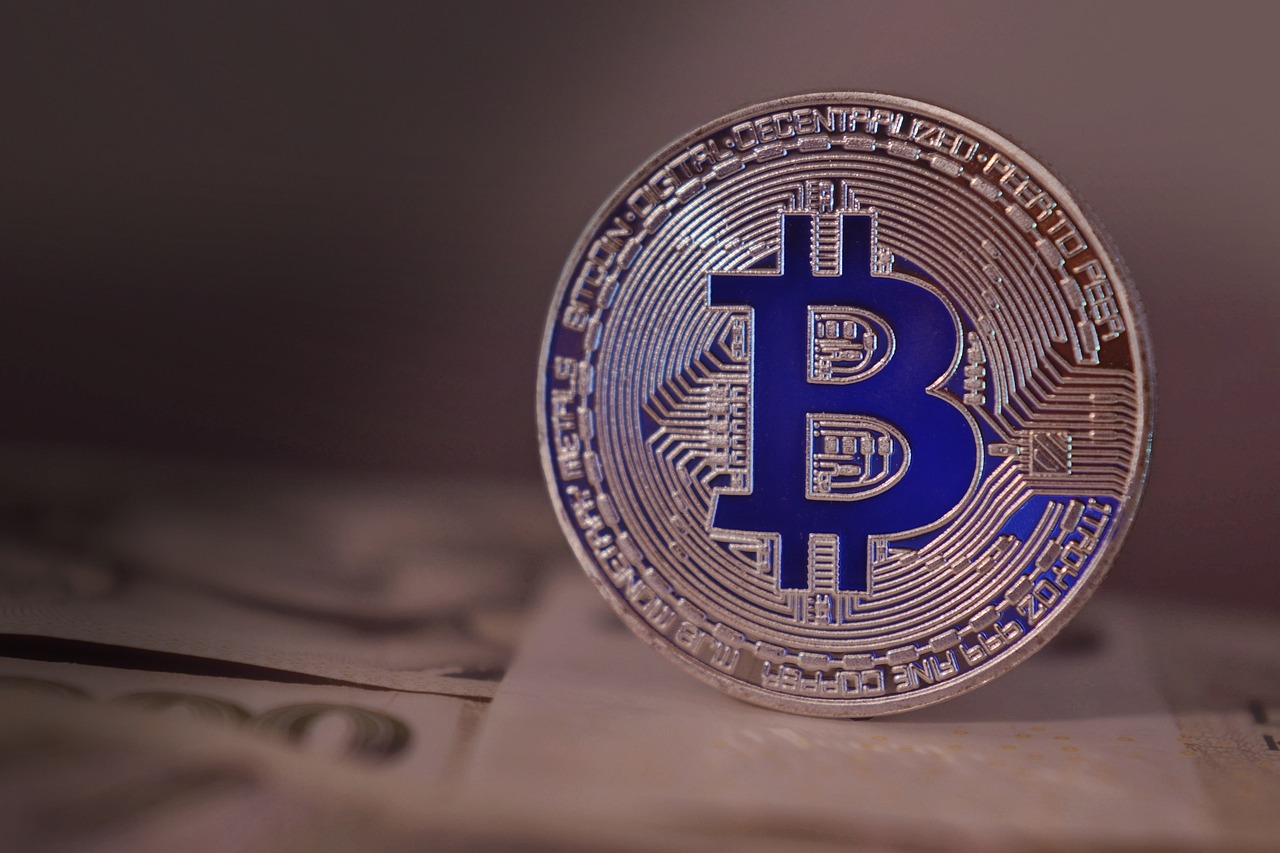
Challenges of Centralized Exchanges
While centralized exchanges (CEXs) offer a plethora of benefits, they are not without their challenges. One of the most significant issues is the regulatory scrutiny that these platforms face. Governments around the world are increasingly focusing on cryptocurrency regulations, which can lead to sudden changes in how exchanges operate. For instance, a new regulation could impose stricter KYC (Know Your Customer) requirements, making it cumbersome for users to trade.
Another major concern is the risk of hacking. Despite implementing robust security measures, centralized exchanges have been prime targets for cybercriminals. High-profile hacks, such as the infamous Mt. Gox incident, serve as stark reminders of the vulnerabilities inherent in these platforms. When a hack occurs, it can lead to significant losses for users, as their funds are often stored on the exchange itself rather than in personal wallets.
Moreover, centralized exchanges may impose withdrawal limits on user accounts, particularly for new or unverified users. This can be frustrating for traders who wish to access their funds quickly, especially during market volatility. Additionally, the process of verifying accounts can be lengthy, causing delays that can be detrimental to traders looking to capitalize on market movements.
In addition to these issues, users often have to place a degree of trust in the exchange itself. This reliance on a third party can be unsettling for many in the crypto community, who value the autonomy that decentralized systems provide. If a centralized exchange decides to halt trading or restrict access to certain features, traders may find themselves at the mercy of the platform's policies.
Finally, the customer support provided by centralized exchanges can vary significantly. While some exchanges offer excellent support, others may leave users feeling stranded, especially during peak trading times. Long wait times for responses can exacerbate issues, leading to frustration among traders who need immediate assistance.
In summary, while centralized exchanges provide a user-friendly environment for trading, they come with their own set of challenges. From regulatory pressures and security risks to trust issues and customer support inconsistencies, traders need to be aware of these factors when choosing where to trade.
- What is a centralized exchange? A centralized exchange is a platform that facilitates trading by acting as an intermediary, providing liquidity and user-friendly interfaces.
- Are centralized exchanges safe? While they implement various security measures, centralized exchanges are still vulnerable to hacks and regulatory scrutiny.
- What are withdrawal limits? Withdrawal limits are restrictions imposed by exchanges on the amount of cryptocurrency a user can withdraw within a certain timeframe.
- How does regulatory scrutiny affect trading? Regulatory scrutiny can lead to changes in trading policies, KYC requirements, and even the suspension of trading activities.

Advantages of Decentralized Exchanges
Decentralized exchanges (DEXs) are becoming increasingly popular in the world of cryptocurrency trading, and for good reason. One of the most significant advantages of DEXs is the control they offer users over their assets. Unlike centralized exchanges, where you have to trust a third party with your funds, DEXs enable you to trade directly from your wallet. This means you are the sole custodian of your assets, which can greatly enhance your sense of security and ownership.
Another key benefit is the enhanced privacy that decentralized exchanges provide. When you trade on a DEX, you typically do not need to provide personal information or go through lengthy verification processes. This anonymity is particularly appealing to individuals who value their privacy and wish to keep their financial activities discreet. In a world where data breaches are all too common, the ability to trade without exposing personal details is a refreshing change.
Moreover, DEXs are often resistant to censorship. Since they operate on a blockchain, they are less susceptible to government and institutional interference. This characteristic makes them particularly attractive to users in regions where financial transactions are heavily regulated or restricted. With a DEX, you can trade freely, without the fear of your transactions being blocked or your account being frozen.
However, it’s essential to acknowledge that while DEXs offer these advantages, they also come with their own set of challenges. For instance, liquidity can sometimes be an issue. Many DEXs may not have the same level of liquidity as their centralized counterparts, which can lead to higher slippage during trades. This is especially true for less popular tokens, where finding a buyer or seller can be more challenging. But, as the ecosystem matures, we are witnessing improvements in liquidity solutions for DEXs, making them more viable for traders.
In summary, the advantages of decentralized exchanges lie in their ability to provide users with greater control, enhanced privacy, and resistance to censorship. As more traders become aware of these benefits, the popularity of DEXs is likely to continue to rise, reshaping the landscape of cryptocurrency trading.
- What is a decentralized exchange? A DEX is a platform that allows users to trade cryptocurrencies directly with one another without the need for a central authority or intermediary.
- Are decentralized exchanges safe? While DEXs offer enhanced security by allowing users to retain control of their funds, they are not without risks. Users should still exercise caution and conduct thorough research.
- How do I trade on a decentralized exchange? To trade on a DEX, you typically need a compatible cryptocurrency wallet. After connecting your wallet to the DEX, you can start trading directly from your assets.
- Can I trade any cryptocurrency on a DEX? Not all DEXs support every cryptocurrency. It's essential to check the list of available trading pairs on the specific DEX you are using.
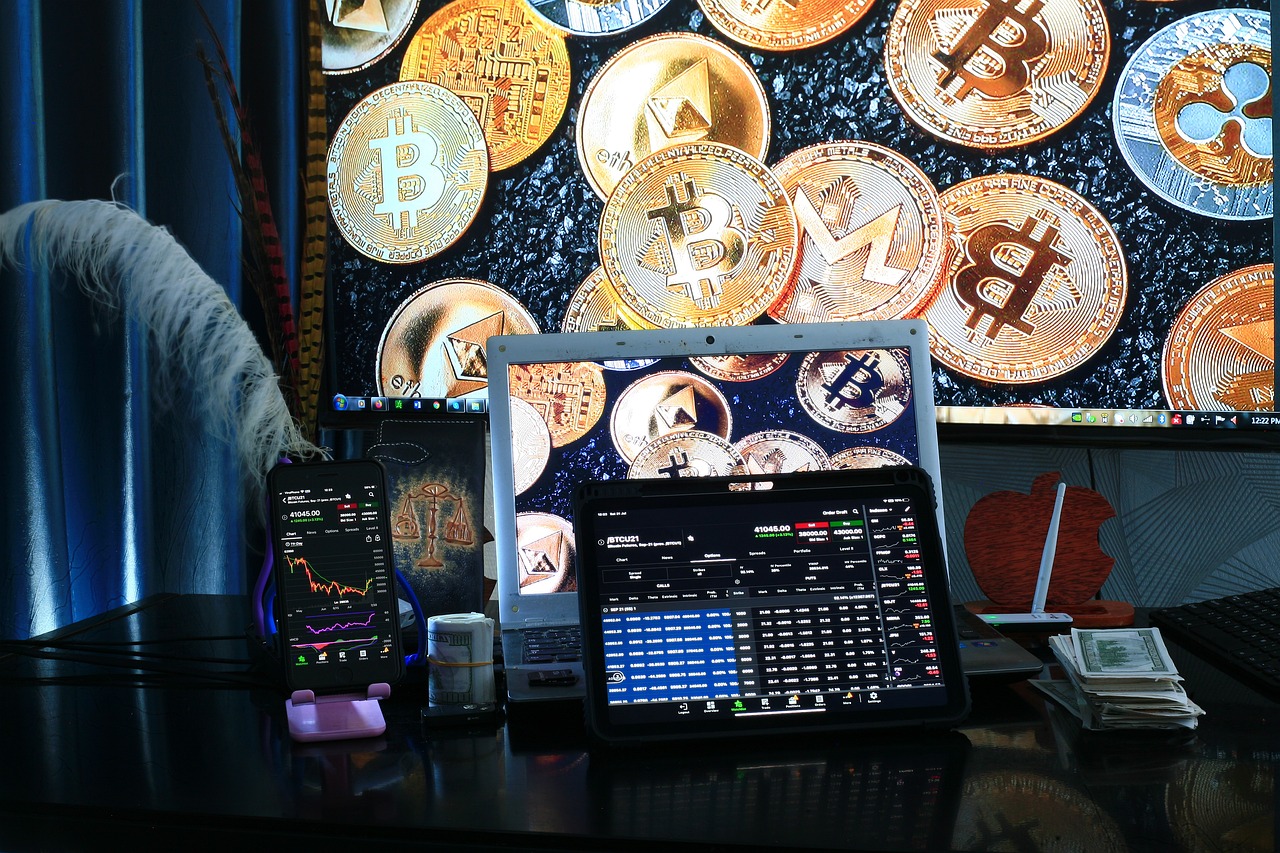
Liquidity Issues in Decentralized Exchanges
When it comes to decentralized exchanges (DEXs), one of the most pressing challenges traders face is liquidity. Think of liquidity as the lifeblood of any trading platform; without it, trading becomes sluggish and inefficient. In centralized exchanges, liquidity is often abundant due to the large number of users and the volume of trades occurring simultaneously. However, DEXs operate differently, often leading to liquidity issues that can hinder the trading experience.
One significant factor contributing to liquidity problems on decentralized exchanges is the fragmentation of trading pairs. Unlike centralized exchanges that offer a multitude of options under one roof, DEXs may host various trading pairs across different platforms. This fragmentation can result in lower trading volumes for specific tokens, making it challenging to execute large orders without significantly impacting the price. For example, if you wanted to trade a lesser-known token, you might find yourself facing slippage—a situation where the price you pay is higher than expected due to insufficient liquidity.
Another aspect to consider is the market depth. On centralized exchanges, users can often see a comprehensive order book filled with buy and sell orders, which provides a clearer picture of market activity. In contrast, DEXs may struggle to maintain a deep order book, especially for less popular tokens. This shallow market depth can lead to higher volatility and unpredictability in prices, which can be particularly daunting for traders looking for stability.
Furthermore, the user experience on DEXs can also exacerbate liquidity issues. Many decentralized platforms have complex interfaces that can be intimidating for new users. If traders are unsure about how to navigate these platforms, they may be less likely to engage actively, further decreasing liquidity. In contrast, centralized exchanges often provide user-friendly interfaces and customer support, encouraging more trading activity.
To combat these liquidity challenges, some DEXs are implementing innovative solutions such as automated market makers (AMMs) and liquidity pools. These systems allow users to contribute their assets to a shared pool, which can then be used to facilitate trades. By incentivizing users to provide liquidity, DEXs can improve their overall trading efficiency. However, this is still a developing area, and the effectiveness of these solutions can vary significantly between platforms.
In conclusion, while decentralized exchanges offer numerous benefits, including enhanced privacy and control, liquidity issues remain a significant hurdle. As the crypto landscape evolves, addressing these liquidity challenges will be crucial for the growth and adoption of DEXs. Traders must remain vigilant and consider these factors when choosing where to execute their trades.
- What is liquidity in trading?
Liquidity refers to the ease with which an asset can be bought or sold in the market without affecting its price. High liquidity means many buyers and sellers are active, while low liquidity can lead to price fluctuations. - Why do decentralized exchanges have liquidity issues?
Liquidity issues in DEXs can arise from fragmentation of trading pairs, shallow market depth, and a lack of user engagement due to complex interfaces. - How can liquidity be improved on decentralized exchanges?
Implementing automated market makers (AMMs) and liquidity pools are ways DEXs can enhance liquidity by incentivizing users to contribute their assets for trading. - Is trading on decentralized exchanges riskier?
While DEXs provide greater control and privacy, the lack of liquidity can introduce risks such as slippage and price volatility, making trading potentially riskier compared to centralized exchanges.
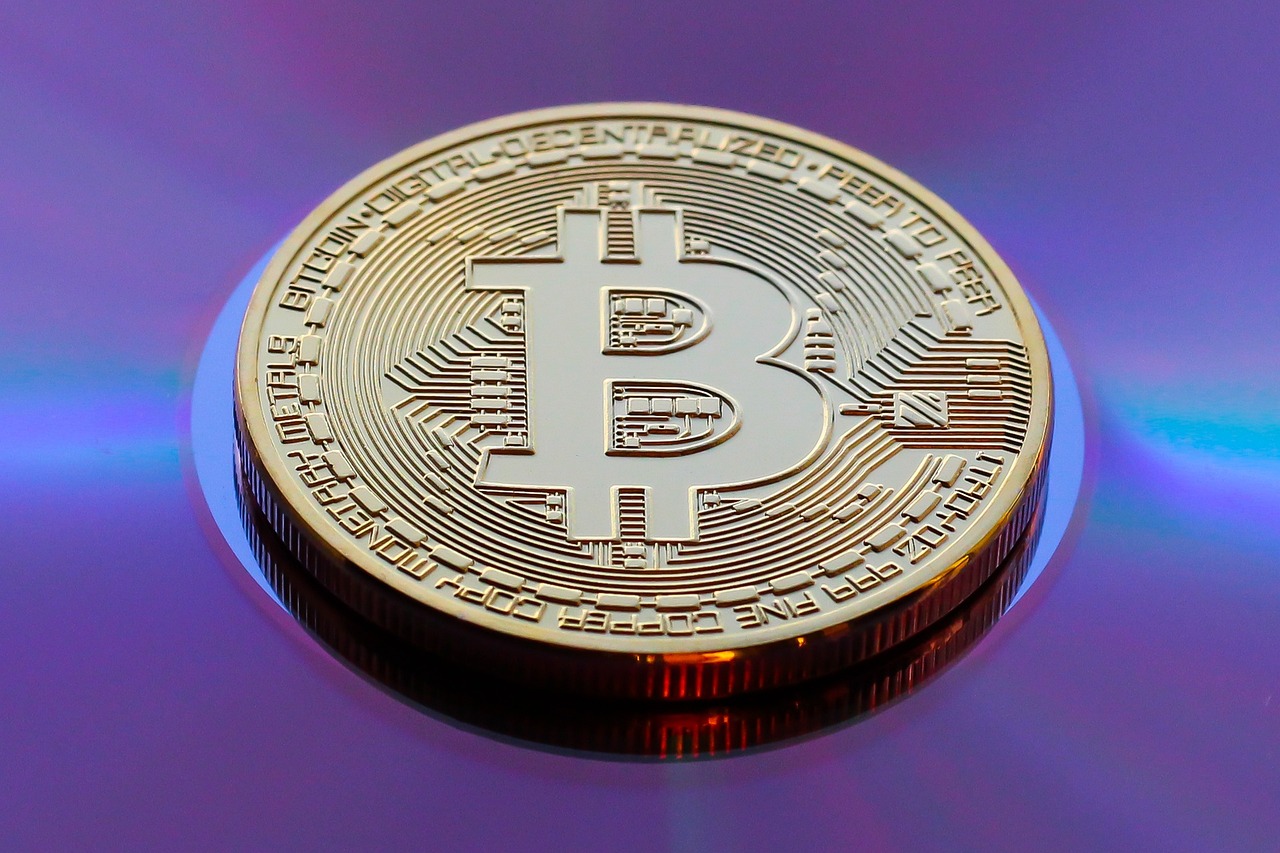
Future of Trading: Centralized vs. Decentralized
The future of trading is an exciting topic, especially as we stand at the crossroads of centralized and decentralized exchanges. As the cryptocurrency landscape continues to evolve, traders are increasingly looking for ways to optimize their experiences and maximize their profits. But how do these two types of exchanges stack up against each other, and what does this mean for the future of trading?
In the coming years, we can expect a fascinating blend of features from both centralized and decentralized exchanges. Imagine a world where the liquidity and user-friendly interfaces of centralized platforms meet the security and autonomy offered by decentralized exchanges. This hybrid model could very well cater to a wide range of trader preferences, making it easier for everyone—from novices to seasoned pros—to navigate the complex world of cryptocurrency.
One of the most notable trends we might see is the integration of decentralized finance (DeFi) elements into centralized exchanges. This could mean offering users more control over their assets, while still benefiting from the speed and efficiency that centralized exchanges provide. Picture this: you're trading on a platform that allows you to hold your private keys, yet you still enjoy the fast transaction speeds and customer support that you’ve come to rely on. Sounds like a dream, right?
Moreover, as regulatory frameworks become clearer, we're likely to see centralized exchanges adopting more robust security measures that incorporate decentralized principles. This could lead to enhanced user trust and a more secure trading environment. For example, imagine a centralized exchange that utilizes blockchain technology to offer transparent transaction histories, thereby reducing the potential for fraud and manipulation.
However, the challenges associated with decentralized exchanges, such as liquidity issues and complex user interfaces, will still need to be addressed. As more traders flock to decentralized platforms, liquidity could improve, making it a viable option for a broader audience. This could create a ripple effect, encouraging even more innovation in the space.
In summary, the future of trading is likely to be characterized by a harmonious blend of centralized and decentralized features. By leveraging the strengths of both models, traders can enjoy a more efficient, secure, and user-friendly trading experience. As we continue to witness advancements in technology and regulatory clarity, the landscape of cryptocurrency trading will undoubtedly become more dynamic and accessible for everyone.
- What are the main differences between centralized and decentralized exchanges? Centralized exchanges act as intermediaries, providing user-friendly interfaces and liquidity, while decentralized exchanges allow for peer-to-peer trading without intermediaries.
- Which type of exchange is safer? Decentralized exchanges generally offer enhanced security and privacy since users retain control over their funds, whereas centralized exchanges can be vulnerable to hacks.
- Can I use both types of exchanges? Absolutely! Many traders use both centralized and decentralized exchanges to take advantage of the unique benefits each platform offers.
- What should I consider when choosing an exchange? Consider factors such as liquidity, security measures, user experience, and the types of assets available for trading.
Frequently Asked Questions
- What is the main difference between centralized and decentralized exchanges?
Centralized exchanges act as intermediaries, offering user-friendly platforms with high liquidity, while decentralized exchanges allow for peer-to-peer trading without intermediaries, providing greater control and privacy for users.
- Are centralized exchanges safe for trading?
While centralized exchanges implement security measures like two-factor authentication and cold storage, they can still be vulnerable to hacks and breaches. It's essential to choose reputable exchanges and follow best practices for security.
- Can I trade on a decentralized exchange without an account?
Yes! Decentralized exchanges do not require you to create an account. You can trade directly from your wallet, giving you full control over your funds and privacy.
- What are the advantages of using a decentralized exchange?
Decentralized exchanges offer increased privacy, control over your assets, and resistance to censorship. They empower users to trade without relying on a central authority, making them appealing for those prioritizing security.
- Do decentralized exchanges have liquidity issues?
Yes, liquidity can be a significant challenge for decentralized exchanges, especially for less popular tokens. This can lead to higher slippage and less efficient trading compared to centralized exchanges.
- What should I consider when choosing an exchange?
Consider factors like security, user experience, liquidity, and the variety of trading pairs offered. Evaluate whether you prefer the control and privacy of a decentralized exchange or the speed and support of a centralized one.
- Is it possible to use both centralized and decentralized exchanges?
Absolutely! Many traders use both types of exchanges to take advantage of their unique benefits. This hybrid approach can enhance trading strategies and provide more opportunities in the crypto market.




